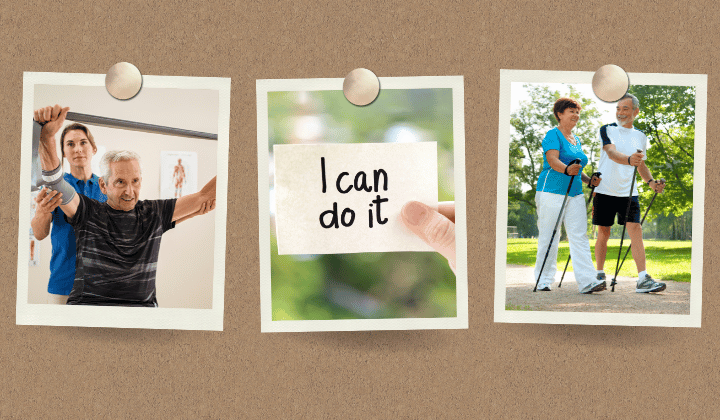Making exercise an enjoyable part of your everyday life may be easier than you think. Just choose activities that make you feel happy and confident
If your workout is unpleasant or makes you feel clumsy or inept, you’re unlikely to stick with it. Don’t choose activities like running or lifting weights at the gym just because you think that’s what you should do. Instead, pick activities that fit your lifestyle, abilities, and taste.
You are much more likely to stick with an exercise program that’s fun and rewarding. No amount of willpower is going to keep you going long-term with a workout you hate.
Here are some tips for making exercise more enjoyable.
- Think outside of the gym. If going to the gym fills you with dread and it’s inconvenient, expensive, intimidating, or simply boring, that’s okay. There are many exercise alternatives to weight rooms and cardio equipment.
So even if you hate treadmills but enjoy walking or running outside, where you can enjoy some peaceful alone time and nature that’s great. Exercise that way.
- Find a physical activity you enjoy. Most of us enjoy some form of physical activity. Think beyond the standard running, swimming, and biking options. Here are some activities you may find fun:
- Horseback riding
- Dancing
- Hiking
- Paddle boarding
- Kayaking
- Group exercise
- Martial arts
- Boxing
- Rock climbing
- Zumba
- Fencing
- Join in a game of soccer, tip, basketball, pickleball, tennis etc.
Try activity-based video games
Another alternative are activity-based video games such as those from PlayStation®. These can be a fun way to start moving. So-called online activities keep you moving around – simulating dancing, skateboarding, soccer, bowling, or tennis. Later if you gain confidence, try joining in on the real thing.
You can also use a smartphone application to keep your workouts fun and interesting. Some immerse you in interactive stories to keep you motivated, such as running from hordes of zombies!
If you find activity in general not enjoyable try pairing it with something you do enjoy. Such as watching TV as you ride a stationary bike, chatting with a friend as you walk, taking photographs on a scenic hike, walking the golf course instead of using a cart, or dancing to music as you do household chores.
Many people enjoy social events so make your exercise social. Exercise can be a fun time to socialize with friends and working out with others can help to keep you motivated. If you like company but dislike competition, a running club, water aerobics, or dance class may be the perfect thing.
Others may find that a little healthy competition keeps the workout fun and exciting. You might seek out tennis partners, join an adult soccer league, find a regular pickleball or basketball game, or join a volleyball team.
Getting the whole family involved
If you have a family, there are many ways to exercise together. What’s more, kids learn by example, and if you exercise as a family, you are setting a great example for their future. You could do family walks in the evening if weather permits. Get the whole family doing household chores while blasting some upbeat music. If you clean to the beat it’s quite a workout.
Activities like skiing or ice skating in the winter and hiking, swimming, or cycling in the summer can both make fun family memories and provide healthy exercise.
Try a mindfulness approach to your exercise
Instead of zoning out or distracting yourself when you exercise, try to pay attention to your body. Focus on how your body feels as you exercise, the rhythm of your breathing, the way your feet strike the ground, your muscles flexing as you move, even how you feel on the inside. You’ll improve your physical condition faster but also decrease the flow of worries or negative thoughts in your head and ease your stress and anxiety, two primary symptoms of Parkinson’s.
Exercising in this way can also help your nervous system become “unstuck” and begin to move out of the immobilization stress responses. Activities that engage both your arms and legs such as walking (especially in sand), running, swimming, weight training, rock climbing, skiing, or dancing are great choices for practicing mindfulness and neurological training which improves your Parkinson’s symptoms.









